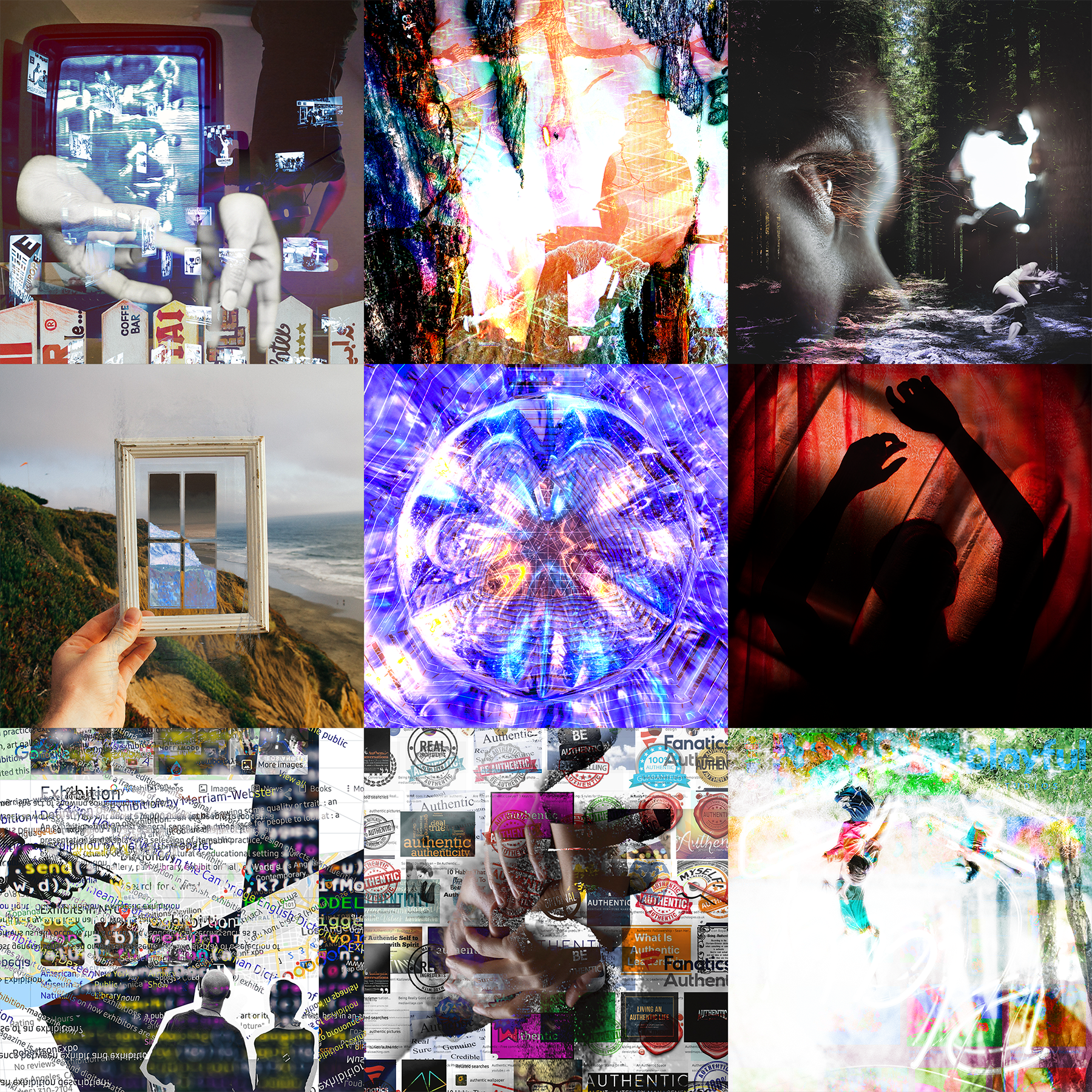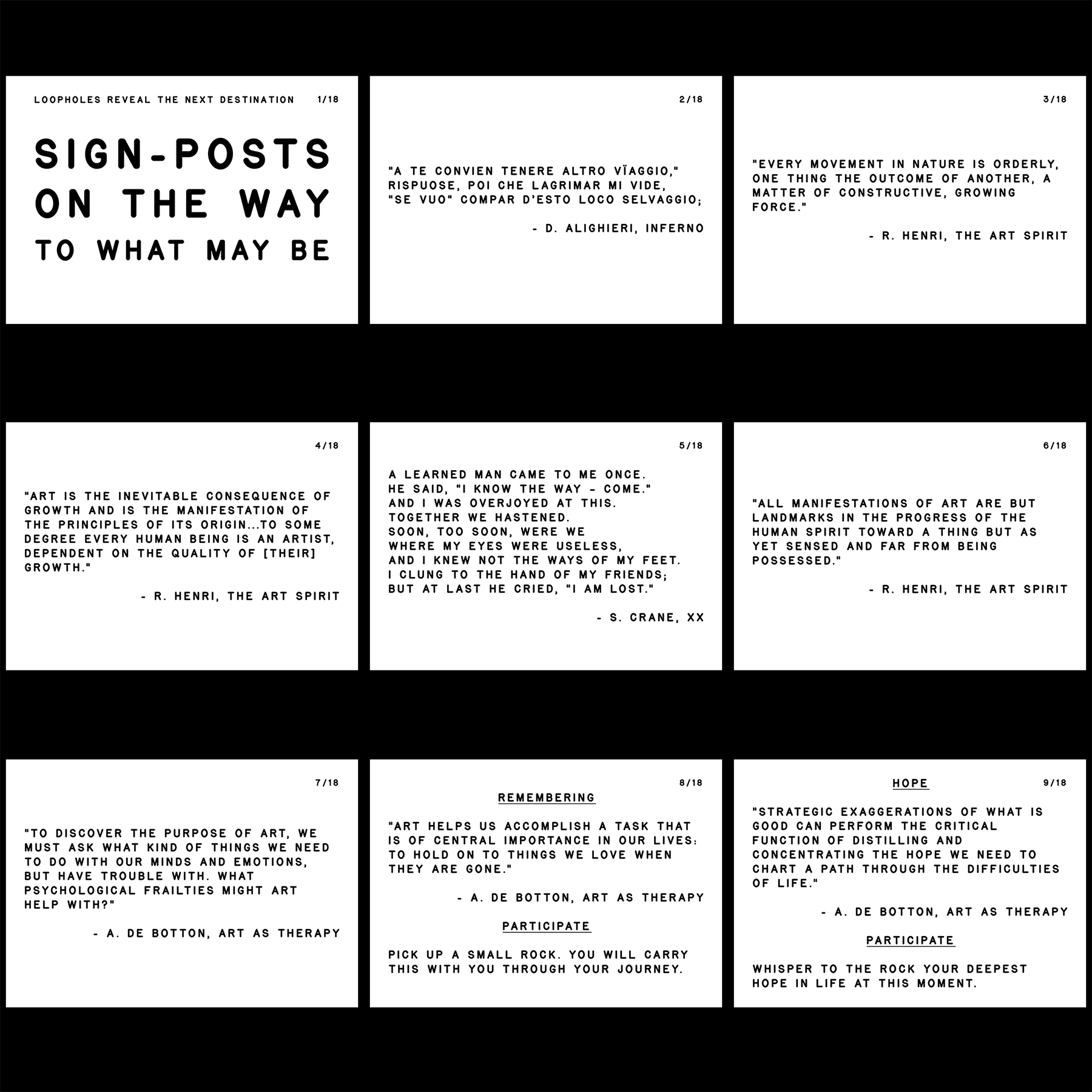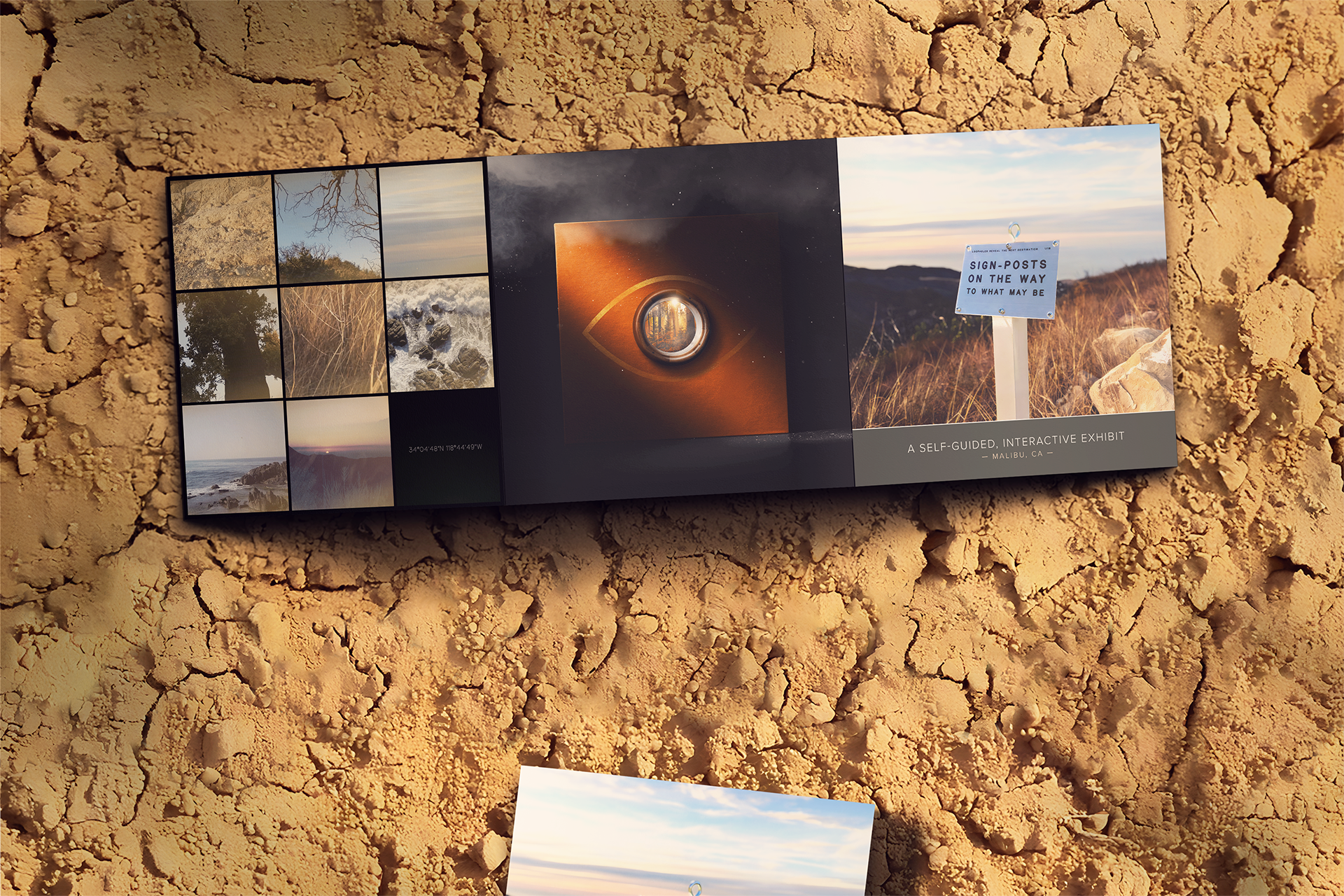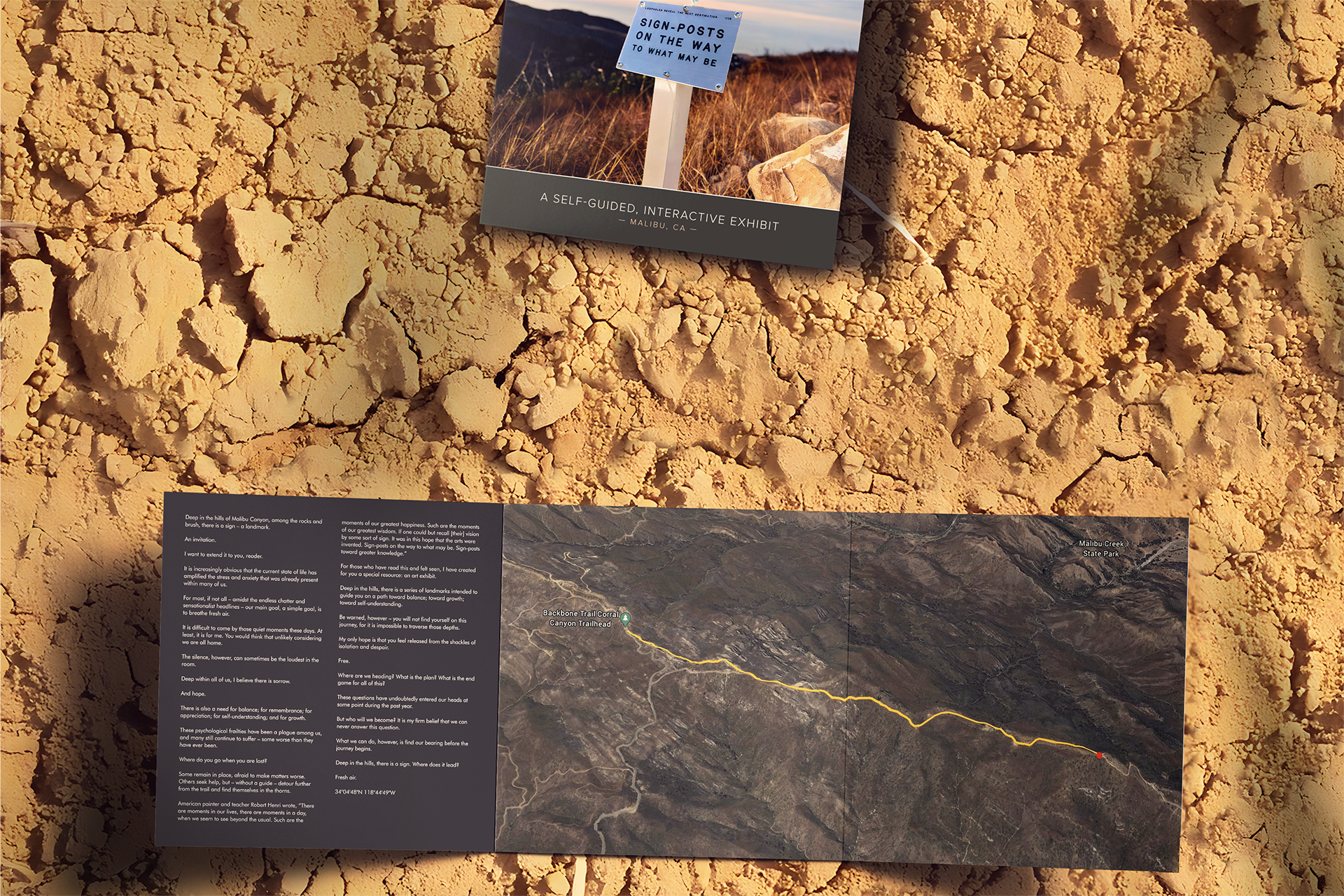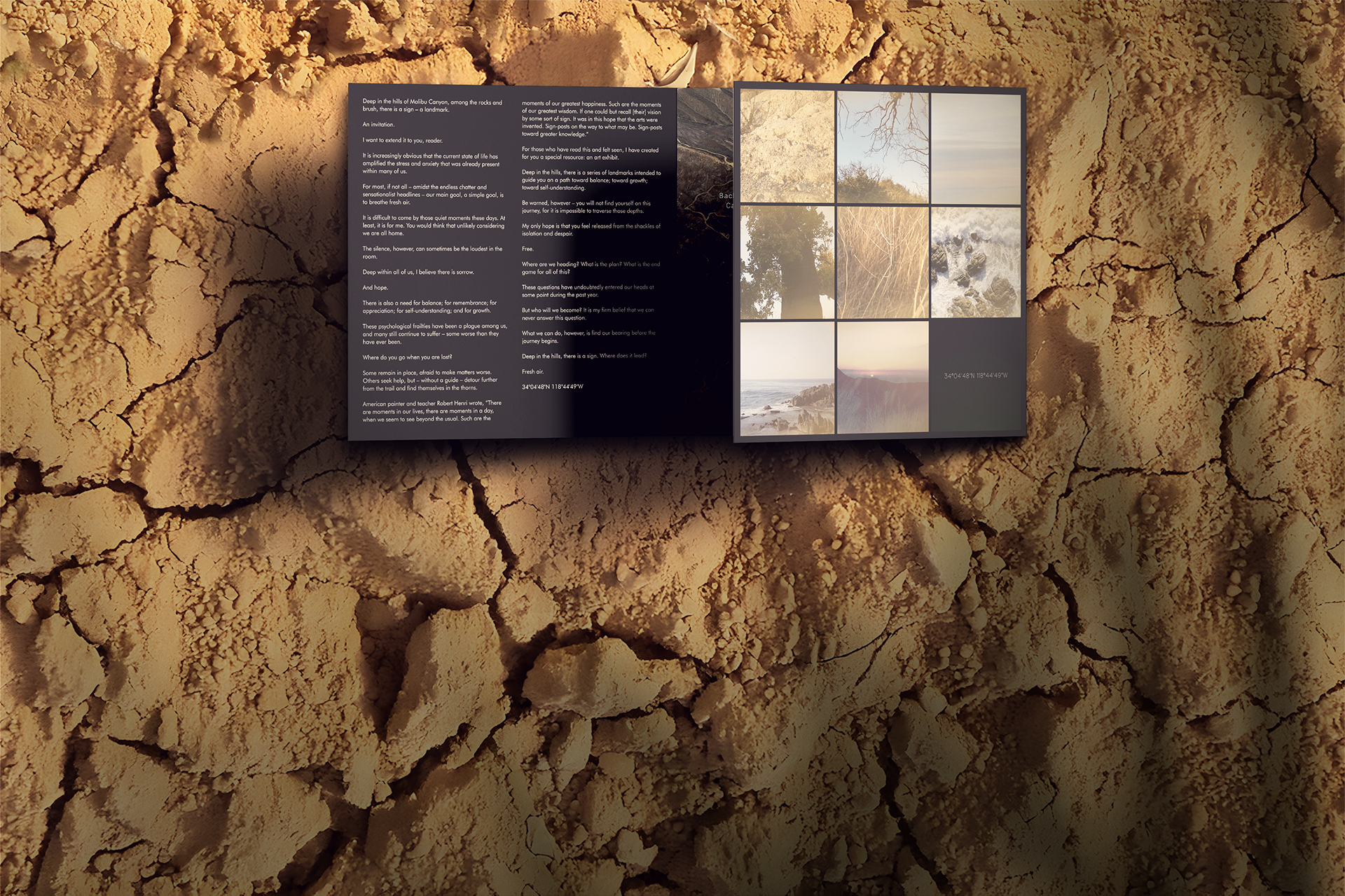Experiential Design
Malibu Sign-Posts
This interactive exhibit, developed for the City of Malibu, invited participants to engage in a solitary outdoor therapeutic exercise. Drawing on ideas from Art as Therapy by Alain de Botton and John Armstrong, the exhibit explored how art can address mental health. The research and installation were showcased at AIGA’s 2021 Design Educators Conference, highlighting the intersection of design, therapy, and the human condition.
The exhibit was constructed over several weeks using locally sourced materials, including 2x4s, rebar rods, and custom signage, all crafted to create an accessible and immersive environment. Each element of the installation was designed to cultivate a more inclusive and transformative experience for participants. The exhibit remained on display for a three-month term and emphasized the relationship between environment, content, and participants.
Showcased at the AIGA 2021 Design Educators Conference, the exhibit garnered recognition for its innovative approach to mental health and art.
Art Direction/Graphic Design: Matt Plaia
Advisors: Julie Cho, Silas Munro
VISION
Exhibitions are dynamic spaces where art and environment merge to create a collective experience of the human condition. They bridge the familiar and the unfamiliar, offering a reflective journey that’s both personal and communal. Rather than simply displaying work, exhibitions invite participants to engage with the tone, context, and environment in ways that deepen their understanding of the content.
VISION
Exhibitions are dynamic spaces where art and environment merge to create a collective experience of the human condition. They bridge the familiar and the unfamiliar, offering a reflective journey that’s both personal and communal. Rather than simply displaying work, exhibitions invite participants to engage with the tone, context, and environment in ways that deepen their understanding of the content.
RESEARCH
To create a more informed and intimate experience for participants, the exhibit focused on three essential components: an accessible environment, engaging content, and active participation. These elements were designed to work together, reflecting how the environment can both shape and be shaped by the tone of the displayed work. The research aimed to investigate how these factors could be leveraged to not only support the content but also involve participants in a more transformative and inclusive experience. Through this exploration, the project examined the dynamic relationship between space, art, and the viewer.
RESEARCH
To create a more informed and intimate experience for participants, the exhibit focused on three essential components: an accessible environment, engaging content, and active participation. These elements were designed to work together, reflecting how the environment can both shape and be shaped by the tone of the displayed work. The research aimed to investigate how these factors could be leveraged to not only support the content but also involve participants in a more transformative and inclusive experience. Through this exploration, the project examined the dynamic relationship between space, art, and the viewer.
DEVELOPMENT
Over the course of several weeks, the exhibit was meticulously constructed using locally sourced materials, including 2x4s, rebar rods, and custom signage. Each signpost was designed with durability and environmental consideration, using materials that blended with the natural surroundings. The typography was inspired by the iconic font used in National Parks, reinforcing the exhibit’s connection to nature and exploration. Carefully cut, sanded, drilled, and assembled by hand, the installation emphasized craftsmanship and attention to detail, with a dedicated team bringing the project to life during early morning hours despite logistical challenges.
DISTRIBUTION
To promote the exhibit, a brochure and social media campaign were developed. The brochure provided attendees with deeper insights into the exhibit’s themes and design process, while the social media campaign extended the reach of the project, engaging a broader audience and inviting participants to explore the exhibit through both physical and digital channels.


